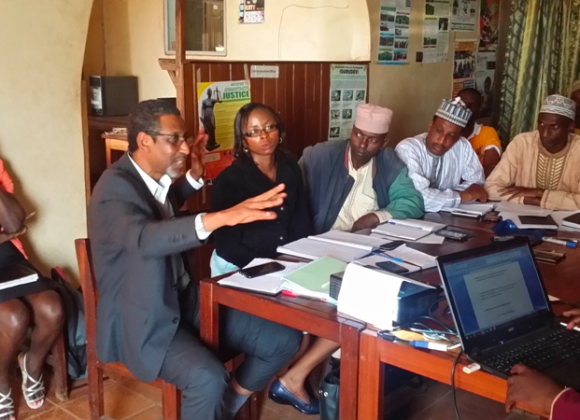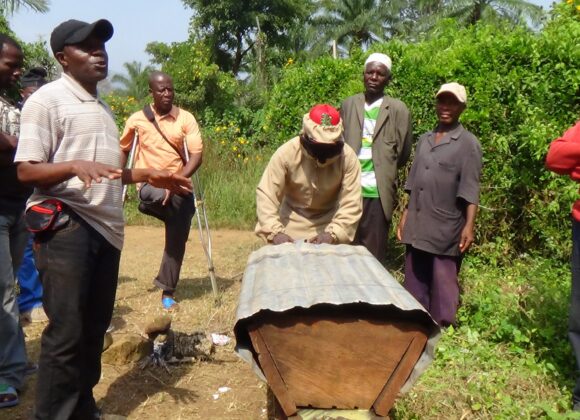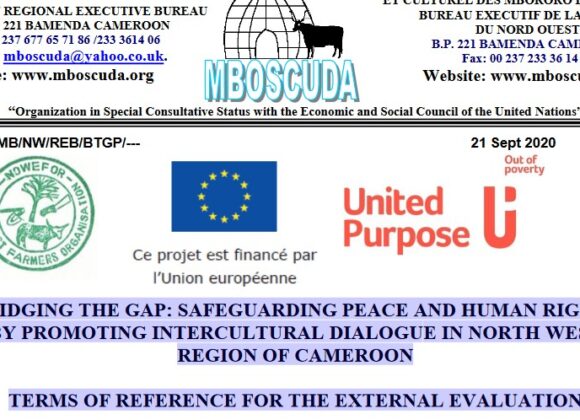Motto {Baldul}: Jangen, Demen e Duren (education, environmentally sustainable agriculture and cattle herding).

History of Mbororo Fulani
History of the Mbororo–Fulani
The question about the origin of the Mbororo-Fulani remains unanswered in the annals of history although the bulk of the speculations are similar. Several scholars have shown interest in the identity of the Mbororo-Fulani; however a satisfactory conclusion has not yet been reached. Despite this seeming loophole, various theories have been exposed relating to the origin of the Mbororo-Fulani. Delafosse (1912) attributed the origin of the Mbororo–Fulani to the Syrians of Semitic (Aramaic) speech. Moreover, the latter entered the African continent from Cyrenaica about 200 A.D. He recounts that the Fulani are the descendants of a hybrid between Jews and some local tribes in North Africa. Palmer (1967) supports the aforementioned perspective and further recounts that the hybrid and Arabs, who eventually penetrated into the Maghrib in North Africa about 650-750 A.D. mixed with another group of people, the Duradae.
According to Palmer, the Duradae are the source of the “Fulani proper”. Meek (1913) on the other hand, links the Fulani with proto-Egyptians and an ancient Libyan tribe. He arrived at this proposition by studying the physique of the Fulani. Furthermore, many writers have traced and attributed the origin of the Fulani to the Arabs as in the case of St. Croix (1945) and Mohammad (1976: 29-33). One of the legends narrated from the latter, explain that the Fulani are descendants of one of the five offspring of Oukba- an Arab, and Bajjo Mango – a Sarakoule. He further narrates that the fruits of the marriage between Oukba and Bajjo Mango were four children, Deita, Woya, Roroba and Nasi. He claims that, they are the actual ancestors of the Fulani who started speaking Fulfude. Arnott (1970:8), agreeing with the above view, further note that after some time the ancestors separated and one of the group moved to Futa–Toro (Senegal Basin). This was further confirmed by Murdock (1959:415), who linked the Fulani to the Tukular tribe who still inhabit the middle region of Senegal. This view is supported by Sa’ad (1977) in the following statement. “The earliest centre of the Fulani in the western Sudan was the region of Senegal Basin but today, they are found as far as Sudan and Ethiopia…”
In another work by St. Croix (1945: 9), he narrates a legend which explains the origin of the nomadic Fulani. The narration indicates that the nomadic Fulani are descendants of a baby who was left in the bush by the mother due to a quarrel between she and her husband. A spirit found the baby and promised him that, he would roam continuously in the bush but would be rewarded with a lot of wealth. The boy was advised to go to a river where in a line of cattle would emerge. He was counseled by the spirit to lead the line of emerging cattle and not to glance behind. The boy failed to obey the instruction and looked behind. He did so and the emerging cattle from of the river stopped when the most beautiful beast was emerging.
The various opinions and narrations presented above point to the fact that the question of Mbororo–Fulani origin and identity is yet to be answered
The Fulani did not remain or settle permanently along the Senegal River as some of them moved eastward to other parts of Africa, as indicated by Mohammad (1959:226–227). The migration of the nomadic Fulani from Futa–Toro into Ferlo in the south and Kaarto in the east is confirmed by Murdock (1959:417). The Fulani arrived in Masina through Sonika and Bambara in the 14th century, while a vanguard of them infiltrated into Futa Jalon from Senegal. Further migration took them into Hausa land around Sokoto and in Bauchi in Northern Nigeria. Muhammad (1976: 153) explains that the eastward movement was due to the following reasons; the large ocean, which lies to the west; in the north, the Sahara desert is a hindrance and to the south, the thick forest, which breeds the tse-tse fly, made the eastward movement the best option.
The Mbororo–Fulani, who are the largest nomadic group in the world, play a crucial economic role as seen in the following remark by Weeks (1978: 133), “Their herds of cattle and sheep are the major source of meat for hundreds of villagers, towns and cities from Wadai, beyond the shore of lake Chad to the Atlantic coast of Senegal”
The Mbororo-Fulani arrived Cameroon in the early eighteen century, entering through the Adamaoua and Northen Provinces. They later migrated and settled in eight of Cameroon’s ten provinces to the exception of the South and Litoral Provinces which are not suitable for cattle rearing.
The Mbororo-en share a number of characteristics with the other pastoralist Fulani tribal groups including the Fulfulde language, Haematic ‘racial’ origin, Islam, and a cultural code of contact know as ‘Pulaaku’. However, the Mbororo-Fulani exhibit several distinct socio-economic and political features to the extent that they constitute a distinct ethnic category. The critical difference is their pastoral livelihood, which, in spite of the changing political economy of cattle rearing is still closely aligned to Mbororo identity (Azarya 1999: xiii –xix).
The Mbororo-Fulani can be divided into three major ethnic groups identified by the colour of their cattle, style of decoration of their bowls, and migratory movements. These are the ‘Aku-en’, Bodaabe and the ‘Jafun-en’. In Cameroon Mbororo’en (singular: Mbororo) are found all over the national territory under four Lamidats (the paramount traditional institution) under whom are found community leaders called Ardos. The four Lamidats are found in Fuigil in the North Province, Lompta in the Adamaoua Province, Sabga in the North West Province and Didango in the West Province. The economy of the Mbororo–Fulani in the early 19th century was exceedingly simple. Cattle had little economic significance and the number a man owned was an index of his wealth and importance. The women were responsible for milking and they carried the milk, with pats of butter floating in it, in large shallow gourds to local markets, where it was exchanged for food grown by cultivators. Expenditure was on food, salt, payment for ‘gainakos ’(herdsmen) and ‘jangali’ (cattle tax), with occasional purchase of cloth, household goods and saddlery. Mbororo–Fulani sold cattle with the utmost reluctance; the number sold will depend on the expenditures that cannot be met by receipts from the sale of milk and butter by the women. The greater parts of such expenditure were on annual cattle tax paid to the local councils.
Join Us
Welcome to MBOSCUDA
Welcome to the Community. We have been existing since 1992.

Latest News

Make A Call
Our Location
MBOSCUDA National Executive Bureau B.P 1086, Yaoundé-Cameroon
MBOSCUDA Building, Old Town,
P.O Box 221, NWR, Bamenda – Cameroon



